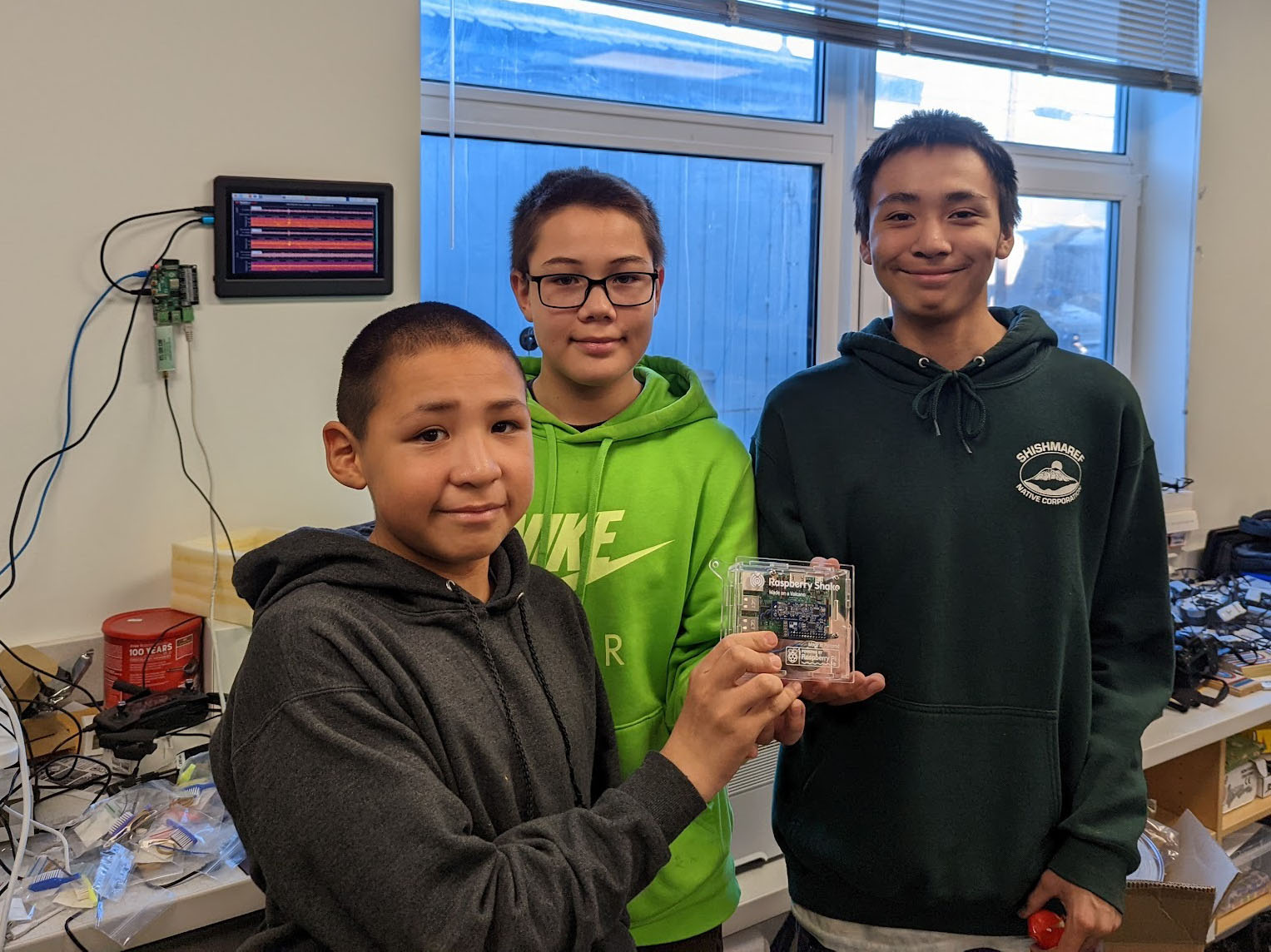"Could the seismograph detect how strong the waves crash against our island?" asked a student at Shishmaref School. The classroom of 8th and 9th graders was brainstorming about possible uses for their new school seismograph after Gabriel Low, K-12 outreach specialist at the Alaska Earthquake Center, introduced it to them during a recent outreach trip to the region. The ocean is a prominent part of life in Shishmaref, an Inupiat village of around 600 people located on a small barrier island between the Chukchi Sea and the Seward Peninsula. In addition to measuring sea wave intensity, proposals from the class included measuring ground motion in their school gym during games and detecting polar bears on the sea ice. After school that day, a group of students assisted in the permanent installation of their school seismograph and live data display, seen in the photo.
Shishmaref School, along with 15 other schools around Alaska (see map), participate in the Earthquake Center's Seismology in Schools program. This K-12 outreach initiative aims to engage Alaskan middle and high school students in seismology and STEM learning through introducing them to real-time earth observation. This recent trip brought three new sites – Shishmaref, Nome, and Kotzebue – into the program.
The core of Seismology in Schools is built around the student-maintained network of Raspberry Shake school seismographs around the state. We have built upon this foundational network by launching three additional initiatives aimed directly at promoting sustained student engagement: (1) The statewide, extracurricular "Shake Ambassador Club"; (2) the "T3 Seismic Studies" dual credit course through the University of Alaska Fairbanks eCampus; and (3) the "Shake Challenge" geohazard-themed STEM design competition. These opportunities allow for interested students to deepen their learning, gain credit and recognition for their work, and connect with like-minded peers around the state.
Currently, there are over 30 middle and high school students from nine different communities who participate in the Shake Ambassador Club. Nearly all are participants in the Shake Challenge competition, the T3 Seismic Studies UAF eCampus course, or both. This March, students will come together at the UAF Geophysical Institute in Fairbanks to present their final Shake Challenge solutions and ideate about how to implement their newfound knowledge and skills into community-based, student-led research projects the following school year.
If you are interested in learning more about the Seismology in Schools program, visit our webpage at earthquake.alaska.edu/schools or contact Gabriel Low at glow2@alaska.edu.
The AEC Seismology in Schools program partners with Alaska T3 Alliance program and is supported by Incorporated Research Institutions for Seismology (IRIS) and the UAF Geophysical Detection of Nuclear Proliferation University Affiliated Research Center (GDNP UARC).








